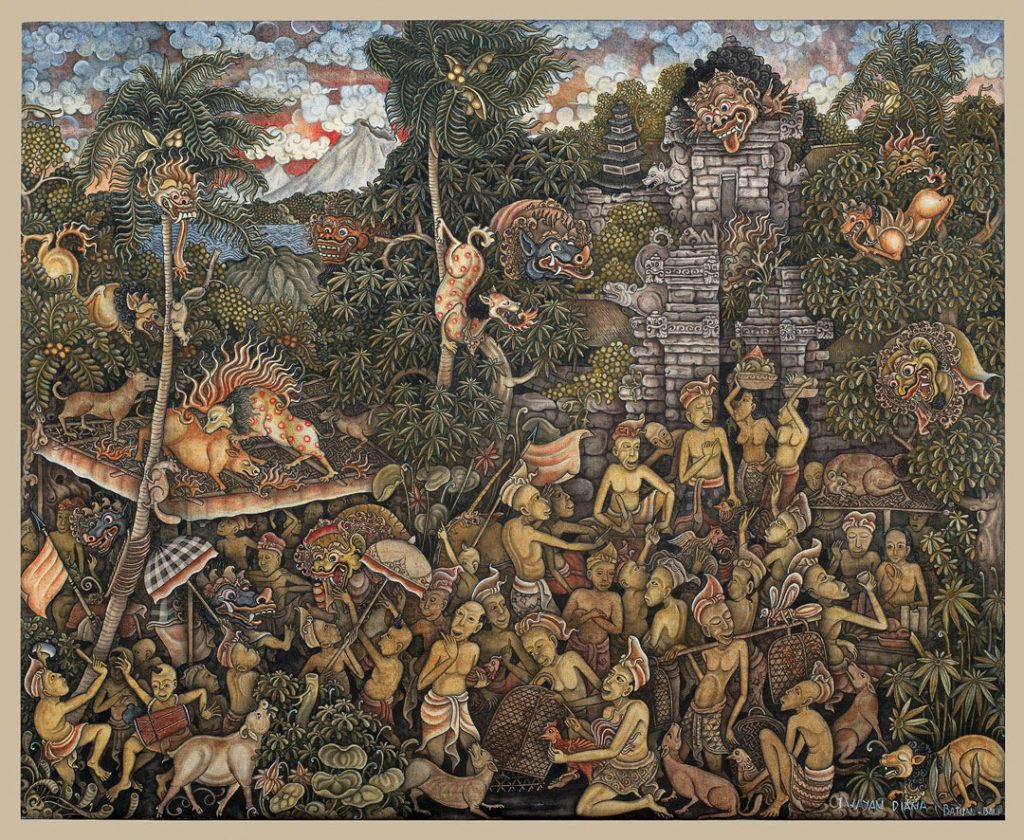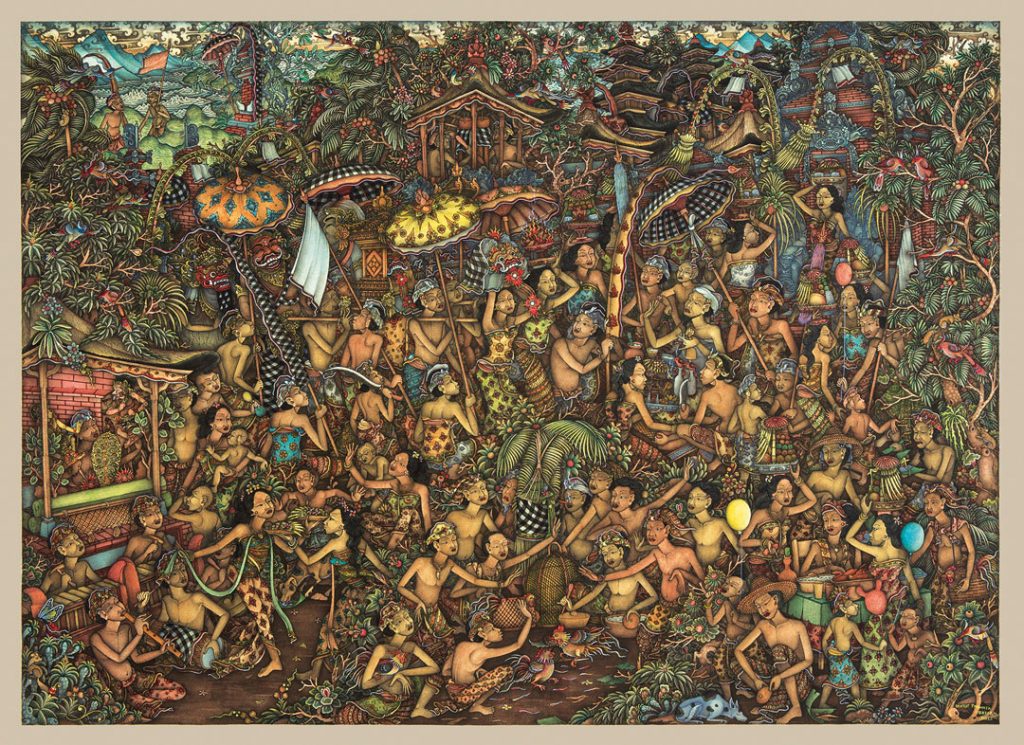With the Batuan painting style, ritual life has long been an inspiration for the artists. Here, Bruce Granquist shares how important rituals are to the subject and timing of artists and their work.
Life in Batuan is saturated with ritual. The steady flow of ritual activity in people’s lives sets them firmly in a sacred orientation, everything they do is coloured by this stance. This applies to activities completely unrelated to the prescribed ritual calendar. Artists will often consult the ritual calendar to choose an auspicious day to begin a painting, even though it is intended for sale to someone from outside Bali.
Images of activity connected to various aspects of ritual life provides the majority of thematic material for Batuan paintings, the artists return to these subjects again and again. This painting, seen below, shows the arrival of people at one of the village temples after bringing sacred relic from the temple to be spiritually cleaned in the ocean, a ritual called Melasti.

Ketut Parwita Bali
52-72 cm. Paper
2000
It is easy for an outsider in Bali to get absorbed by the sensations of a ritual being preformed, the glittering colour, the noisy confusion, the spectacle of a big event. It is also easy for an artist to get caught up in re-creating this carnival atmosphere. But a ceremony is serious business for the Balinese, by means of these ceremonies they are creating an interface between the seen and unseen worlds. The Balinese believe that their rituals invoke powerful and unpredictable beings, rituals sometimes turn dangerous and go out of control.
The view below is a view of a common cockfight with the usual cast of characters, but also includes some celestial beings that we could not ordinarily apprehend. Scattered throughout the scene are demons of various types, stalking the participants from trees and temple structures, and even mingling amongst the gathered men.

I Wayan Diana
60-70 cm. Canvas
2006









